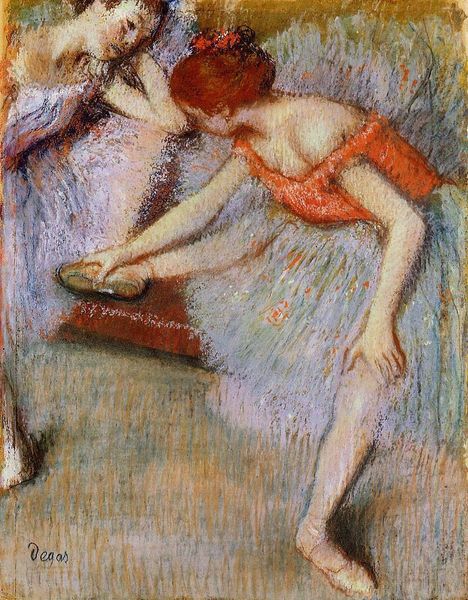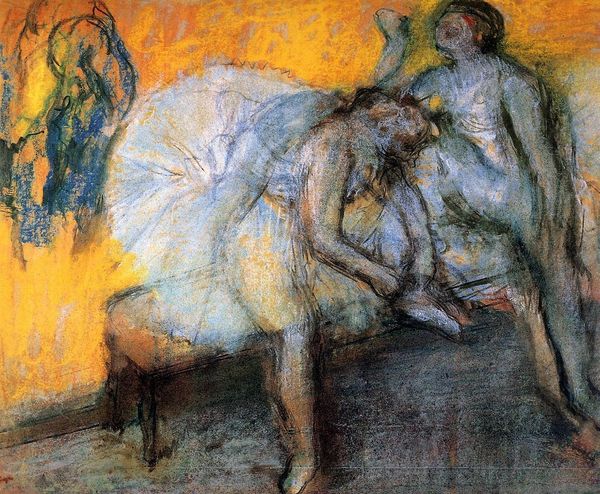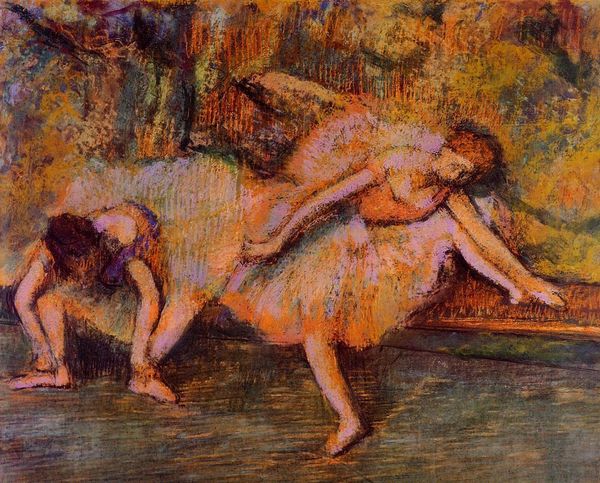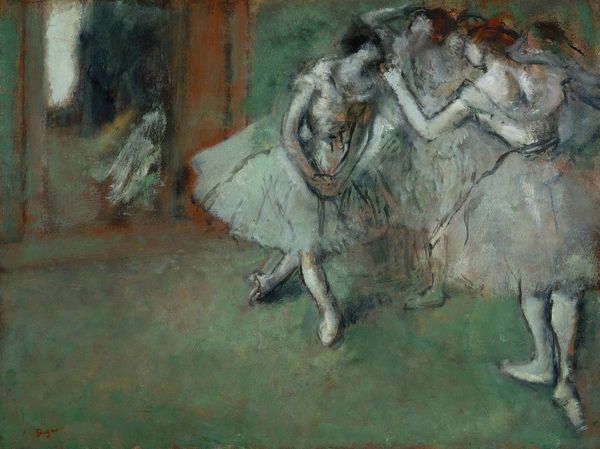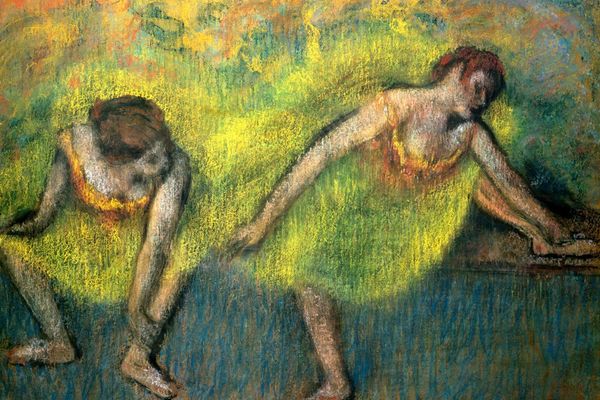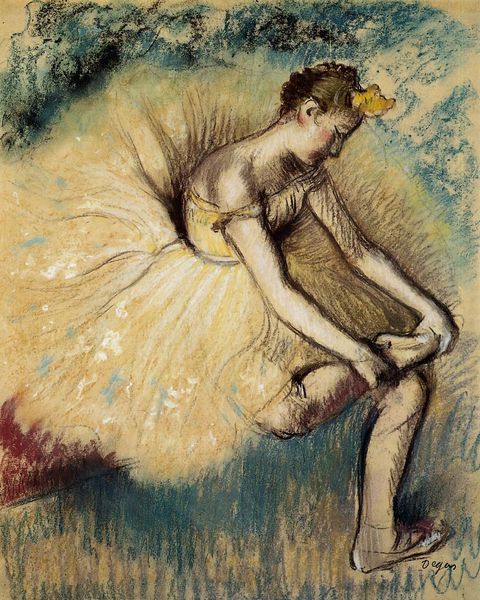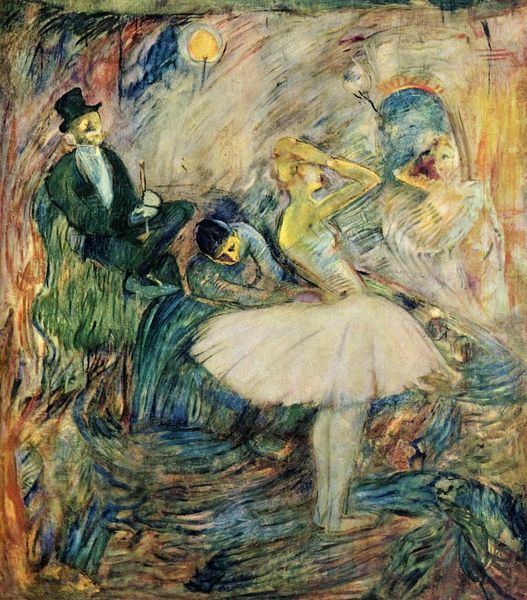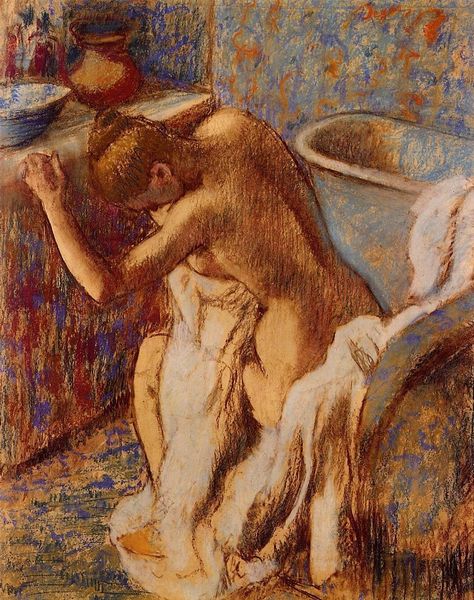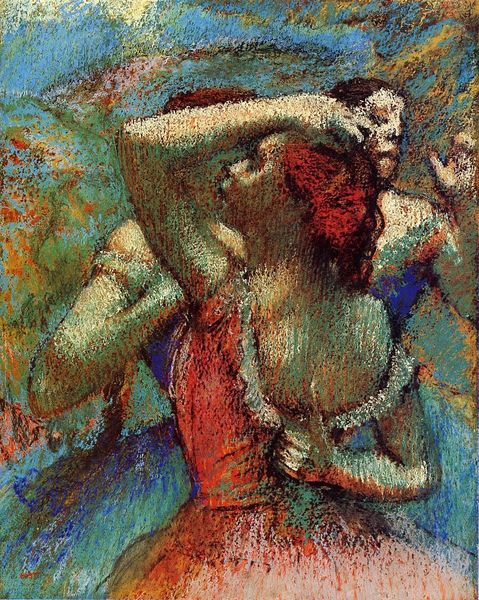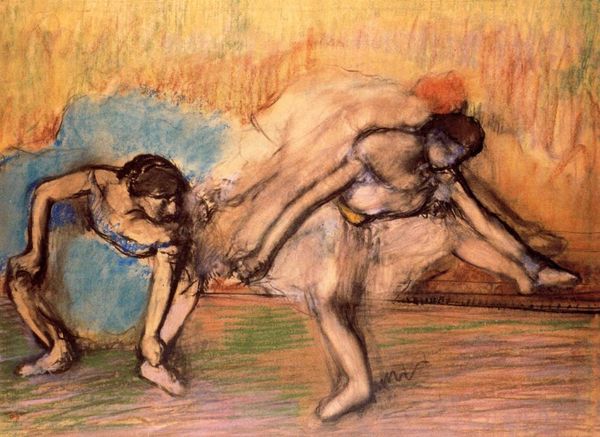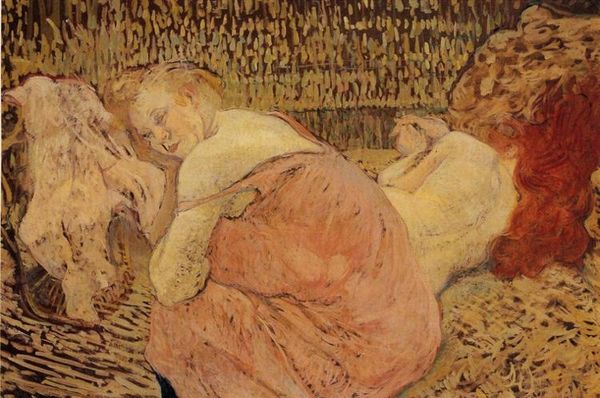
Dimensions: 103 x 92 cm
Copyright: Public domain
Curator: This is Edgar Degas' "Two Dancers at Rest (Dancers in Blue)," created around 1898, now residing at the Musée d'Orsay. It's pastel and essence on paper. Editor: My immediate reaction is one of fatigue and strained elegance. I am intrigued by how rough and almost unfinished it looks. I want to touch the paper! Curator: That rawness is crucial. Degas repeatedly explored dancers as a motif, but these images offer more than just a pretty picture. What do you read in their postures? Editor: It feels honest, almost brutal, in its depiction of labor. Their muscles are so visible; it suggests strenuous rehearsal, not just performance. The red around the floor almost feels like blood after they hurt their feet! It also challenges the notion of dancers as these ethereal creatures; here, their physicality is undeniable. Curator: Precisely! Degas presents these dancers as workers, pushing their bodies. The pose of one is especially charged—her head heavy on her hands is weighted with vulnerability and exhaustion. She represents an almost timeless trope of sacrifice and hidden labor. What do you observe about the actual material used? The application of colors and brushstrokes seem to speak a kind of symbolism on their own. Editor: There's such a textural complexity achieved through the pastel. See how he's layered and blended it, especially in the skirts? I’d be interested to explore the paper itself; whether it was a coarse or smooth grade would drastically affect the texture. But to see him handle this fragile medium while portraying something as tough as dance choreography is quite the point of visual dichotomy and genius. Curator: It reveals the underlying truth behind their ethereal appearance; it reveals their strength that the audience seldom recognizes. But looking beyond this one, how might this resonate with his wider body of work? Do we know that he did other artworks that challenge performance and portray a sense of suffering? Editor: Oh, absolutely. It's tempting to frame his artistic vision through the lens of material conditions and societal pressures affecting women at this time. Perhaps looking closer into his labor and work ethic while creating these images is in itself, its own form of feminine sacrifice and portrayal? Curator: Well, this piece invites us to think beyond the idealized performance and consider the bodies—the human beings—behind the art of dance. Thank you for this insight on materiality and context; that's an entirely fresh interpretation for me. Editor: And you for expanding on its rich cultural associations and timeless symbolism. Always more to find in those pastel layers.
Comments
No comments
Be the first to comment and join the conversation on the ultimate creative platform.
